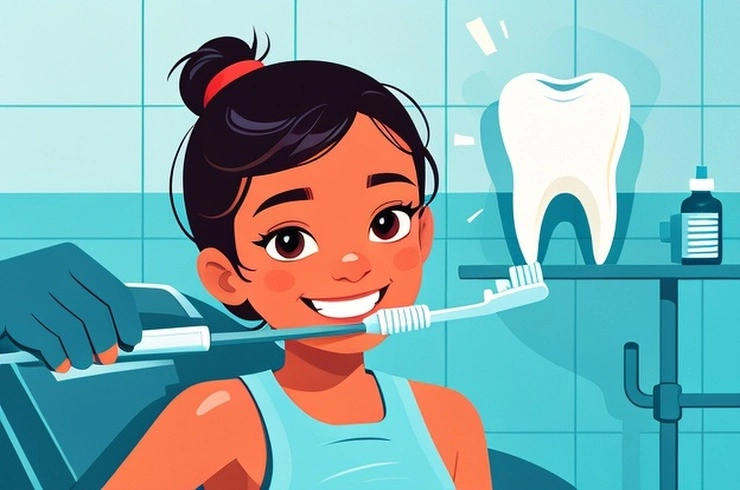
Dental caries, commonly known as cavities, are a widespread oral health issue, affecting individuals across all age groups. While good oral hygiene is crucial, factors like diet, mouth pH, root recession, and weakened enamel can contribute to the development of rampant caries – a severe condition characterized by extensive and rapidly progressing tooth decay, often involving ten or more teeth. Understanding the nature of dental caries and how they manifest in different age groups is key to effective prevention and treatment.
Understanding Dental Caries
Dental caries are essentially irreversible tooth decay caused by the demineralization of the tooth's hard structures. This process begins when bacteria in plaque produce acids that attack tooth enamel. Dental caries can be categorized based on their location:
Interproximal caries: Occur on the sides or between teeth.
Pit and fissure caries: Found in the deep grooves on the biting surfaces of teeth.
Root caries: Develop on the root surface, often associated with gum recession.
Rampant caries, specifically, signify a condition where cavities are not only numerous but also developing at an accelerated rate. While the damage from dental caries is irreversible, the good news is that with proper education and diligent oral care practices at home, they are largely preventable.
Caries Across the Lifespan
Dental caries can affect individuals at any stage of life, with specific risk factors emerging in different age groups:
Early Childhood: Toddlers are susceptible to "baby bottle tooth decay," a form of rampant caries that can result from prolonged exposure to sugary liquids like formula, milk, or fruit juice, especially before bedtime without subsequent teeth cleaning. The low pH environment allows oral bacteria to thrive and demineralize tooth enamel throughout the night.
Adolescence: Teenagers face their own challenges, often due to frequent consumption of low-pH, high-sugar drinks such as soda, sports drinks, and energy drinks. Adolescent caries frequently affect permanent teeth, potentially impacting a teenager's self-confidence, school attendance, and overall well-being due to pain and discomfort. Poor nutrition is often a contributing factor. Encouraging healthier dietary choices, chewing sugar-free gum, drinking fluoridated water, and improving daily oral hygiene can significantly improve their oral health.
Adulthood and Elderly: Adults and seniors can also experience rampant caries, particularly those suffering from dry mouth (xerostomia). Conditions like aging, radiation therapy, or certain medications can decrease saliva production. Saliva plays a vital role as a natural cleanser and a buffer against acids in the mouth. Reduced saliva flow diminishes the mouth's natural defense mechanisms, creating an ideal environment for cavities to form and progress rapidly.
Treating Rampant Dental Caries
The primary treatment for dental caries involves restorative procedures. This typically means removing the decayed portion of the tooth and then placing a filling to strengthen the tooth structure. If the decay is extensive and a significant amount of tooth structure is lost, a dentist may recommend a crown to protect and restore the tooth. The choice of restoration depends on the extent of healthy tooth remaining and the affected tooth's location in the mouth.
Ultimately, the best approach to combating rampant dental caries is prevention. Maintaining a consistent and thorough oral care routine is paramount. This includes brushing twice daily with fluoride toothpaste and daily flossing. However, if rampant dental caries do develop, numerous treatment options are available to restore oral health. It is crucial to consult with your dentist to determine the most effective course of action for your unique situation.
FAQ
What causes rampant caries, and who is more at risk? Rampant caries can be caused by poor oral hygiene, medication side effects (like dry mouth), acidity, and high sugar intake. Young children are at higher risk due to developing enamel, limited oral hygiene skills, and practices like sleeping with a bottle of milk or juice. Adolescents are also vulnerable due to hormonal changes, inconsistent oral hygiene, and diets rich in sugar and carbohydrates. Older adults may experience rampant caries due to denture use, dexterity issues leading to poor hygiene, and reduced salivary flow. Additionally, radiation therapy, especially to the head and neck, can significantly increase a cancer patient's risk of cavities.
How can you recognize the early signs of rampant caries? An early sign of rampant caries is the presence of multiple cavities simultaneously. Look for visible signs of decay such as white or brown spots and discoloration on several teeth. Recognizing these signs early allows for interventions like remineralizing the teeth through proper oral hygiene and topical fluoride to prevent further decay.
What should you do if you think you have rampant caries? If you suspect you have rampant caries, it's essential to discuss your concerns with your dental professional promptly. Strategies to address the issue include strengthening weakened enamel with fluoride and avoiding acidic foods and drinks. You can also reduce cavity-producing bacteria through proper oral hygiene, salt rinses, or by incorporating a probiotic containing lactobacilli. These beneficial bacteria can help metabolize carbohydrates and reduce the acids that contribute to tooth enamel demineralization.
Pro Tip
The content of the article is shared by netizens, please carefully identify it